#grey-headed flying-fox
Explore tagged Tumblr posts
Text


Erika and Eric. Grey-headed flying-fox pups being raised in care after their mothers were killed on powerlines.
2 notes
·
View notes
Text
Marr Crimby

#Grey Headed Flying Fox#bats of australia#bat of the day#daily bat#bat#bats#batposting#cute bats#cute animals#Look at them go#I love them#Christmas
534 notes
·
View notes
Text
I love bats so bad. There are so many types of bats. Cannot explain how cool and fabulous bats are.
#i mean just look at them#there are so many and so many different ones like AHHH#and grey headed flying foxes!!#don’t even get me started on all the types of micro bats#bats#bat supremacy
585 notes
·
View notes
Text


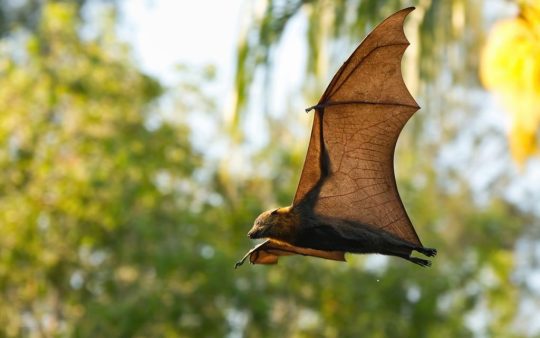
Get Foxy with the Grey-headed Flying Fox
Pteropus poliocephalus, better known as grey-headed flying foxes, are a species of megabat native to eastern Australia. They are typically found in rainforests, woodlands, and swamps, but they have also become common in more agricultural and urban areas, particularly those that maintain large groves of trees. They are semi-migratory, moving when food availability diminishes, and can travel over 1000 km (620 mi) over the course of a season.
Like most bats, grey-headed flying foxes forage at night. They feed exclusively on fruit, pollen, nectar, and tree bark-- most commonly from figs and two species of eucalyptus tree-- and may fly up to 50 km (31 mi) in a single night to find food. Although they are quite large, P. poliocephalus can fall prey to eagles, goannas and snakes, particularly as pups or juveniles.
Because they do not feed on insects, these bats do not use echolocation to navigate. Instead, they use a large range of calls to communicate with other members of their colony, which can contain several hundred members in the summer. Winter colonies are slightly smaller, and segregated by sex, but individuals and families within these groups will stay together for several generations.
Mating occurs between March and May, when males stake out territories and compete to attract females. After mating, mothers seclude themselves in a female-only colony and gestate a singe pup about 6 months after breeding. Weaning takes an additional 5-6 months, after which juveniles separate from their mother. Daughters typically stay within their mother's winter colony, while sons join the male colony after a year's time. Individuals take approximately 30 months to become fully mature, and may live up to 10 years in the wild.
The grey-headed flying fox is notable for being the largest of Australia's bat species. Adults can be anywhere from 600-1000 g (21.5- 35.2 oz), with a wingspan of up to 1 m (3.3 ft). As their name implies, the body is covered with burnt orange fur, and the face is large and fox-like, with none of the large ears or distinct nasal apparatuses that distinguish other bat species.
Conservation status: P. poliocephalus is considered Vulnerable by the IUCN. Populations are declining largely due to habitat destruction. Many individuals are also killed by farmers, who consider them to be pests.
Photos
Vivien Jones
Shane Ruming
Andrew Mercer
#grey-headed flying fox#Chiroptera#Pteropodidae#fruit bats#flying foxes#bats#mammals#tropical forests#tropical forest mammals#tropical rainforests#tropical rainforest mammals#deciduous forests#deciduous forest mammals#urban fauna#urban mammals#oceania#australia#east australia#biology#zoology#ecology#animal facts
78 notes
·
View notes
Text
today's gay animal of the day is...

grey-headed flying foxes!
homosexual behavior has actually been noted in over 20 bat species! males and females of this particular species have been observed engaging in sexual and affectionate same-sex behavior. the acts are characterized by wrapping their large wings around each other, licking and grooming, and nuzzling their heads in each other's chests.
95 notes
·
View notes
Text

Warren the Grey headed flying fox, via
39 notes
·
View notes
Text
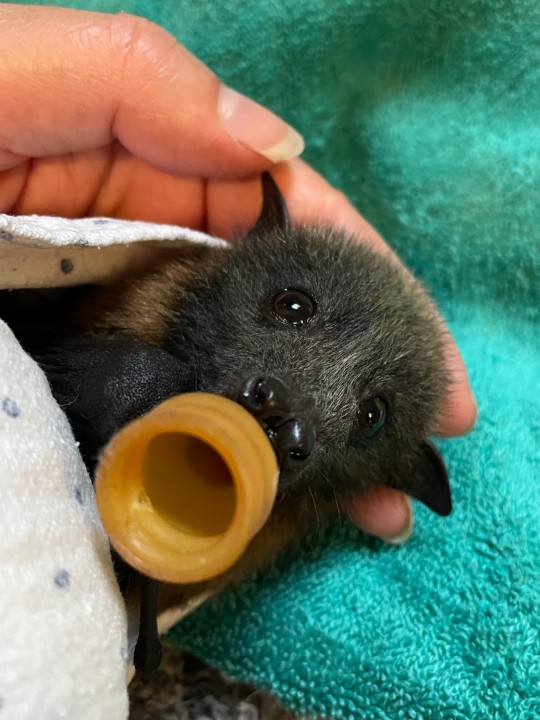
So apparently people from work occasionally bring in rescued animals if carers are scarce and this little guy came in during my training?? His name is Rupert 🥺
#he's a baby grey-headed flying fox and i love him!!#i'm not qualified to handle him bc i'm not vaccinated against rabies but that's something i'm booking in asap so 👀#my stuff#work shenanigans#new tag!!#bats
60 notes
·
View notes
Photo

Bats are my favorite animal and it breaks my heart that they're always the scapegoat. Rabies? Bats. SARS? Bats. COVID? Bats. They're very unlikely to pass on rabies, despite what that rabies copypasta might have you think because they die quickly from it.
Grey-headed Flying-foxes; Eastern Park, Geelong, Victoria, Australia; February 2019
Photographer: René Riegal
#rene riegal#photographer#bats#mammal#animal#wildlife#grey-headed flying foxes#eastern park#geelong#victoria#australia#nature
86 notes
·
View notes
Text

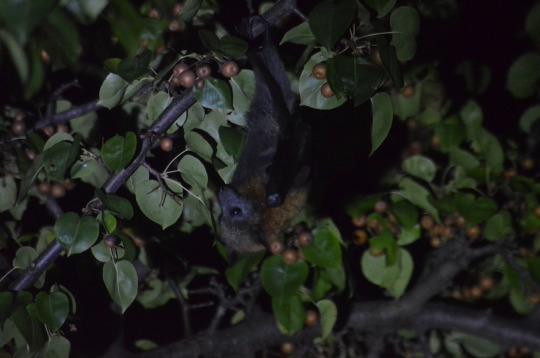
A few more quick pictures of flying foxes while they have a snack.
#nature photography#animal photo#animal photos#nature photo#animal#animals#nature#photo#photos#photography#photographer#grey headed flying fox#flying fox#megabat#bat#bats#interstellars photography
20 notes
·
View notes
Text





Pencil refstudies of the animal my brain is stuck on, then put a bit of watercolour and pencils on ♥
#my art#fruit bat#grey headed flying fox#animal art#i'm also sneakily gonna tag it#bat!mav#because it's my blog and i'll tag my au blorbo if i want to
24 notes
·
View notes
Text
night, fruit bats! - grey-headed flying fox
requested by @alpaca-dave


grey-headed flying foxes have appeared in two episodes so far: season one's "fruitbat" and briefly in season three's "bedroom". bluey loves fruit bats, and so do i! australia is home to over 75 species of bat, but the grey-headed flying fox is the biggest. flying foxes--also called fruit bats--are megabats, the larger of the two classifications of bat. while microbats primarily eat insects, megabats love to chow down on all sorts of fruit and nectar. since we're going to be talking about fruit trees as well, this post will be under a read more.

these bats are highly social, forming groups called "camps" that can contain tens of thousands of individuals. there are three other species of flying fox found in the country (black, little red, and spectacled) and all are effective pollinators, promoting forest health as they disperse seeds and pollen. as bingo correctly states in "fruitbat", these critters are primarily nocturnal, like all bat species. they roost during the day and hunt for fruit, pollen, and nectar at night.

grey-headed flying foxes are partial migrants, and will travel hundreds of kilometers as foraging locations change. the episode gives us a nice montage of dream-bluey and her flying fox friends on a couple different types of fruit tree. lets take a quite detour to learn about some fruit trees.


first up is a nice looking mango tree. this one looks like it could be a bowen variety. they're the most common and one the most tasty kinds grown in australia. so well beloved, in fact, that there's even a 10 meter tall fiberglass one in its namesake town!
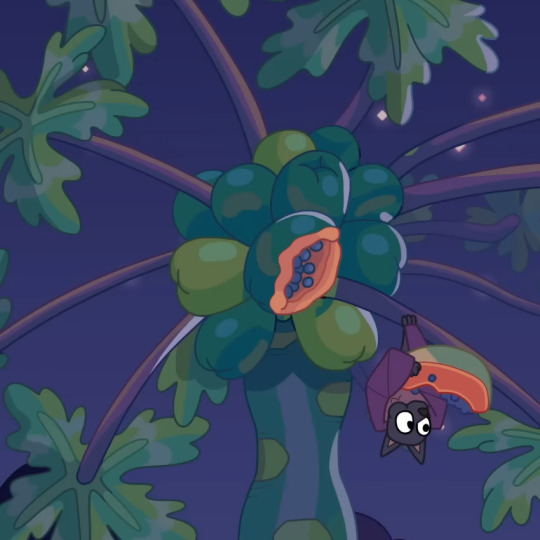

next, a papaya. there are two main varieties, mexican and hawaiian. this one is mexican, the larger of the two, and is a favorite of fruit-eaters like birds and megabats. despite their prevalence, papaya plants are not native to australia.
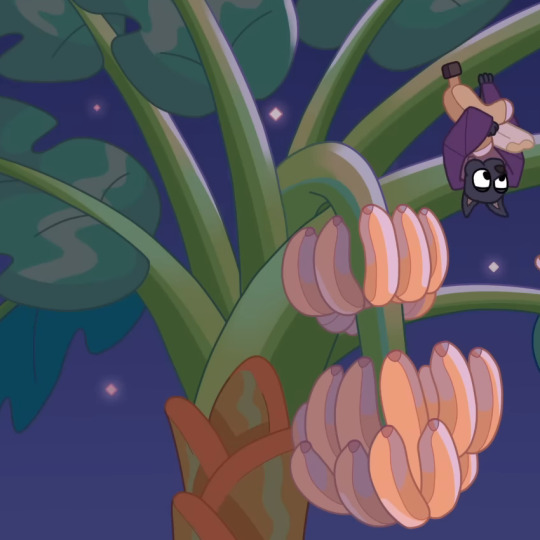
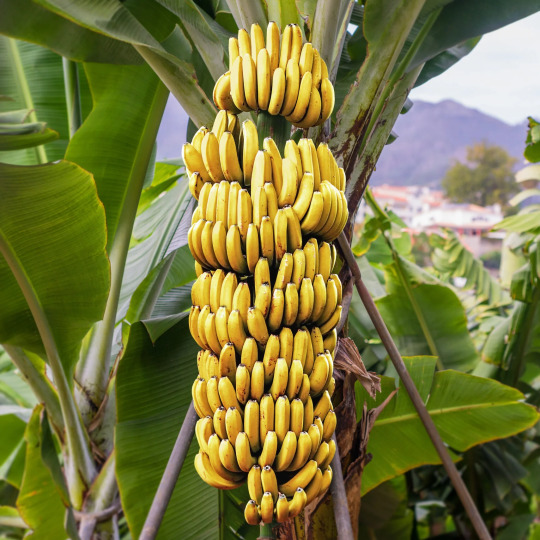
this is a cavendish banana, by far the most popular banana in the entire world--it makes up 99 percent of all bananas grown. the primary variety used to be "big mike", but a devastating fungus-borne disease wiped them out in the 1950s. its likely that the same could happen to the cavendish if we're not careful.

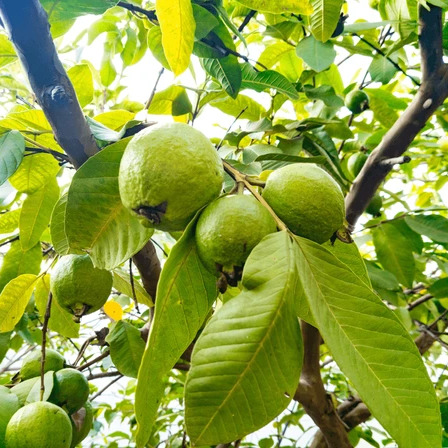
last but not least, a guava tree. this one is a recognizable common guava, which are native to south and central america and the caribbean. they've been introduced worldwide, and can quickly take over. interesting to note that australia actually does have a native guava species, but a highly infectious invasive plant disease called myrtle rust is driving them to extinction.

such a fun assortment of fruits for a cool critter! these big bats are often considered a nuisance in cities, but they are vital to maintaining healthy forests. one grey-headed flying fox can spread as many as 60,000 seeds in a single night! they're particularly vulnerable to rising temperatures, and experts have noted a considerable decline in their numbers in the last century. the grey-headed flying fox is a beautiful and unique member of the australian ecosystem, and it's high time we appreciated them for the wonders they are. so the next time you say good night, be sure to thank these fascinating animals for all the work they do while you're asleep.
#bluey#bluey in the bush#mammals#trees#grey headed flying fox#mango#papaya#banana#guava#hope u didnt mind the fruit tree break i thought it might b fun
12 notes
·
View notes
Text
Eric, the disposable demon
This is Eric. Will he die? We don’t know. The last Eric died and this one has injuries so it’s entirely possible. He is, after all, an Eric.
So far his only interests in life are his dummy and sleeping. These are appropriate interests for a man of his age (approx 14 days) but the smart money is in on those who include eating in their interests.

2 notes
·
View notes
Text
To soothe the soul

#Grey Headed flying fox#bats of australia#bat of the day#daily bat#bat#bats#batposting#cute bats#cute animals#you love to see them#just take this and give it time
391 notes
·
View notes
Text

Caption: A crib full of 2‒3 week old baby grey-headed flying-foxes in care of Wildcare Australia at The Bat Hospital. November 2008.
Image by user Wcawikinfo.
Licensed under: Attribution-ShareAlike 3.0 Unported (CC BY-SA 3.0). As defined at: https://creativecommons.org/licenses/by-sa/3.0/legalcode
The grey-headed flying fox (pteropus poliocephalus) is the largest bat in Australia - their wingspan may reach up to 1 meter (around 3ft 3in).
They feed on nectar and pollen, as well as a variety of fruit, and play an important role in the propogation of these fruit species by distributing their seeds.
They are classified as Vulnerable under the Environment Protection and Biodiversity Conservation Act 1999.
Bonus fact: the grey-headed flying fox seems to be very faithful to the location in which they build their camp, some fox camps having been used for over a century!
Wildcare Australia is a not-for-profit organisation devoted to the care, rescue and rebilitation the wildlife of Australia.
Image source: https://commons.wikimedia.org/wiki/File:Greyheadedflyingfoxbabies2008canungra.jpg
#bats#chiropteras#chiropteraspost#pteropus poliocephalus#grey-headed flying fox#australia#australian wildlife#wikimedia#wikimedia commons#vulnerable species
9 notes
·
View notes
Photo

Grey-headed Flying Fox
23 notes
·
View notes
Text
because i wanted to draw bats better i picked a random bat and a random color palette and drew it.
behold
the grey headed fruit bat!

Color palette + reference


#silly#this isn’t my normal content#but i can’t handle two blogs on this hellsite#bat#fruit bat#grey headed flying fox#silly doodles
2 notes
·
View notes